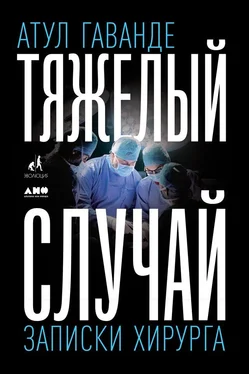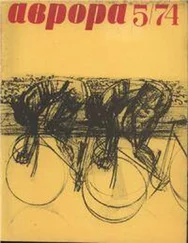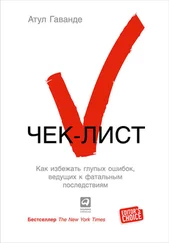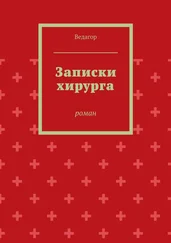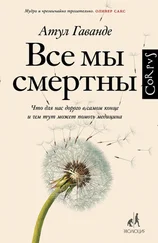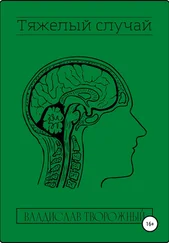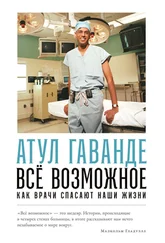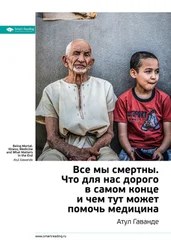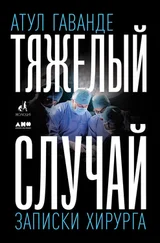5. Meehl, P. E., Clinical Versus Statistical Prediction: A Theoretical Analysis and Review of the Evidence (Minneapolis: University of Minnesota Press, 1954).
6. Dawes, R. M., Faust, D., and Meehl, P. E., «Clinical versus actuarial judgment», Science 243 (1989), pp. 1668−74.
7. Herzlinger, R., Market-Driven Health Care: Who Wins, Who Loses in the Transformation of America’s Largest Service Industry (Reading, Mass.: Addison-Wesley, 1997).
Когда врачи ошибаются
1. Brennan, T. A., et al., «Incidence of adverse events and negligence in hospitalized patients: results of the Harvard Medical Practice Study I» New England Journal of Medicine 324 (1991), pp. 370−76.
2. Leape, L. L., «Error in medicine», Journal of the American Medical Association 272 (1994), pp. 1851−57.
3. Bates, D. W., et al., «Incidence of adverse drug events and potential adverse drug events», Journal of the American Medical Association 274 (1995), pp. 29−34.
4. Localio, A. R., et al., «Relation between malpractice claims and adverse events due to negligence: results of the Harvard Medical Practice Study III», New England Journal of Medicine 325 (1991), pp. 245−51.
5. Reason, J., Human Error (Cambridge: Cambridge University Press, 1990).
6. История победы анестезии над ошибками: Pierce, E. C., «The 34th Rovenstine Lecture: 40 years behind the mask — safely revisited», Anesthesiology 84 (1996), pp. 965−75.
7. Cooper, J. B., et al., «Preventable anesthesia mishaps: a study of human factors», Anesthesiology 49 (1978), pp. 399−406.
8. Результаты работы «Группы по изучению сердечно-сосудистых заболеваний Северной Новой Англии» приводятся во многих исследованиях; их краткое изложение можно найти в статье: Malenka, D. J., and O’Connor, G. T., «The Northern New England Cardiovascular Disease Study Group: a regional collaborative effort for continuous quality improvement in cardiovascular disease», Joint Commission Journal on Quality Improvement 24 (1998), pp. 594−600.
9. Brooks, D. C., ed., Current Review of Laparoscopy , 2nd ed. (Philadelphia: CurrentMedicine, 1995).
Девять тысяч хирургов
1. Вы можете найти информацию о ежегодной конференции Американской коллегии хирургов на сайте: www.facs.org.
Как хорошие врачи становятся плохими
1. История Гарольда Шипмана подробно описана в статье: Eichenwald, K., «True English murder mystery: town’s trusted doctor did it», New York Times , 13 May 2001, p. Ai.
2. Обвинение в деле Джона Рональда Брауна включало также попытку заклеить потекший грудной имплант жительницы Лос-Анджелеса с помощью клея Krazy Glue. Он был признан виновным в убийстве второй степени Филипа Бонди, которому ампутировал ногу, и приговорен к 15 годам лишения свободы. Более подробную информацию вы можете найти в статье: Ciotti, P., «Why did he cut off that man’s leg?» LA Weekly , 17 December 1999.
3. Об истории Джеймса Бёрта можно прочитать в статье: Griggs, F., «Breaking Tradition: Doctor Steps in to Stop Maiming ‘Surgery of Love’», Chicago Tribune , 25 August 1991, p. 8.
4. Данные о наркозависимости врачей приведены в книге: Brook, D., et al., «Substance abuse within the health care community», in Friedman, L. S., et al., eds., Source Book of Substance Abuse and Addiction (Philadelphia: Lippincott, 1996)
5. Два источника исчерпывающей информации о распространенности психических расстройств среди населения: Mental Health: A Report of the Surgeon General (Rockville, Md.: U. S. Department of Health and Human Services, 1999); Kessler, R. C., et al., «Lifetime and 12-month prevalence of DSM — III-R psychiatric disorders in the United States: results from the National Comorbidity Survey», Archives of General Psychiatry 51 (1994), pp. 8−19.
6. Оценка доли «проблемных» врачей взята из обзора Мэрилин Розенталь: «Promise and reality: professional selfregulation and ‘problem’ colleagues’» in Lens, P., and Van der Wal, G., eds., Problem Doctors: A Conspiracy of Silence (Netherlands: IOS Press, 1997), p. 23.
7. Книга Мэрилин Розенталь: The Incompetent Doctor: Behind Closed Doors (Philadelphia: Open University Press, 1995).
8. Кент Нефф представил данные из своей работы о «проблемных» врачах на Конференции по повышению безопасности пациентов и сокращению числа ошибок в здравоохранении в Центре Анненберга (Ранчо-Мираж, Калифорния) 9 ноября 1998 г.
Пятница, 13-е, полнолуние
1. Scanlon, T. J., et al., «Is Friday the 13th bad for your health?» British Medical Journal 307 (1993), pp. 1584−89.
2. Проведенное Уильямом Феллером исследование фашистских бомбардировок Лондона было опубликовано в книге: An Introduction to Probability Theory (NewYork: Wiley, 1968).
3. Об ошибке меткого стрелка читайте в статье: Rothman, K. J., American Journal of Epidemiology 132 (1990), pp. S6−S13.
4. Buckley, N. A., Whyte, I. M., and Dawson, A. H., «There are days… and moons: self-poisoning is not lunacy», Medical Journal of Australia 159 (1993), pp. 786−89.
5. Guillon, P., Guillon, D., Pierre, F., and Soutoul, J. H., «Les rythmes saisonnier, hebdomadaire et lunaire des naissances», Revue Francaise de Gynecologie et d’Obstetrique 11 (1988), pp. 703−8.
6. Два лучших обобщающих исследования влияния Луны на поведение человека: Martin, S. J., Kelly, I. W., and Saklofske, D. H., «Suicide and lunar cycles: a critical review over twenty-eight years» Psychological Reports 71 (1992), pp. 787−95; Byrnes, G., and Kelly, I. W., «Crisis calls and lunar cycles: a twenty-year review», Psychological Reports 71 (1992), pp. 779−85.
Непостижимая боль
1. Загадке хронической боли в спине посвящена обширная литература. Из статей и исследований, показавшихся мне полезными, упомяну следующие: Hadler, N., Occupational Musculoskeletal Disorders (Philadelphia: Lippincott Williams and Wilkins, current edition 1999); Haldeman, S., «Failure of the pathology model to predict back pain», Spine 15 (1990), p. 719.
Читать дальше
Конец ознакомительного отрывка
Купить книгу
